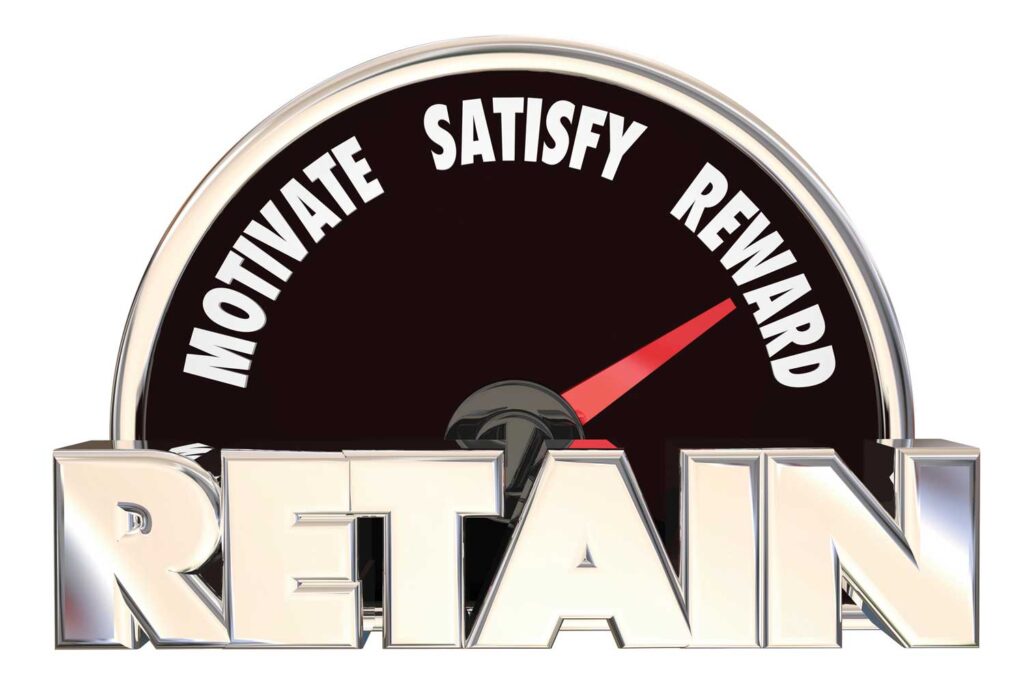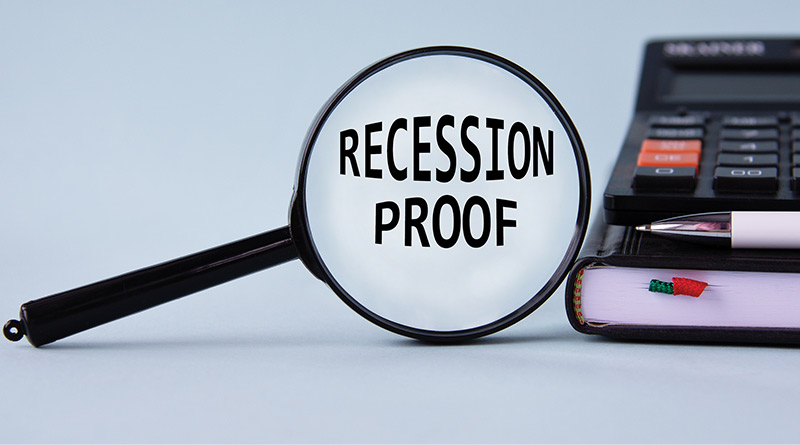How to Recession-Proof Your Business
Abstract: Businesses can mitigate the ravages of a recession by retooling their operations. Rather than engaging in undisciplined cost cutting, managers should aim to generate more funds from fewer assets. Effective steps include fixing underperforming business segments, accelerating collections of receivables, renegotiating outstanding loans, turning unproductive assets into cash, and soliciting productive ideas from top performing employees.
The business world is teetering on the edge of a recession. “We are seeing evidence that the economy is slowing down,” said Anirban Basu, Chairman & CEO of Sage Policy Group. “Retail sales and industrial production are falling. Layoffs are occurring at companies such as Microsoft, Peloton, Twitter, and Amazon.”
Moody’s Analytics estimates an increase of only 1.7% in Gross Domestic Product (GDP) when 2022 numbers are finally tallied. That represents a noticeable deceleration from the 5.9% post-pandemic rebound of the previous year. If 2023 brings an actual decline in GDP—the total of all goods and services transacted in the nation—that will represent the first recession since 2008.
The not-so-secret force driving the economic crisis is the Federal Reserve’s moves to raise interest rates—a proven cure for inflation that, unfortunately, also dampens business growth.
Recessions tend to gain force quickly once they begin, as commercial enterprises shift from chasing demand to cutting costs. History shows that organizations taking swift remedial action rebound faster once hard times recede.
Take stock
What are the best managerial moves in the face of a recession? The answers can be tricky. The current recession is more complex than usual, with businesses getting squeezed from two directions. From the revenue side, a decline in receipts means less cash to cover expenses. From the cost side, increasing prices are punching up operating expenses.
“Over the past six months or so we have seen a rise in the cost of materials and delays in construction and customer payments,” said Josef Roberts, Founder of E Squared Consulting, Atlanta. “Distributors and dealers are buying materials that are much more expensive than before. And delayed receipts are exerting their own pressures. The result is a cash squeeze.”
For businesses, this unusual dynamic has created a treacherous operating terrain. “A recession is much more dangerous when it is combined with inflation, since prices are going up at the same time that revenues are coming down,” said Oded Koenigsberg, Deputy Dean at the London Business School.

Turn inward
Consultants advise one course of action that will almost certainly pay off: Casting a bright light on internal operations. “Now is the time to get under the hood and examine the individual components of a business,” said Travis W. Harms, President of Mercer Capital. “Inefficiencies have almost certainly arisen during the post-pandemic boom. When times are good, managers tend to focus externally on generating revenues and delivering on obligations. It’s all too easy to let operations get a little bit flabby. Then, when the tide goes out, problems are exposed.”
No matter what the current condition of a business, a sharp eye will likely spot one or two internal segments clouding the overall picture. While the knee-jerk reaction to this is to cut costs, that too often retards future profits. “When the economy turns down and companies lack sufficient cash, they all of a sudden are tempted to let go of core assets they really should hold onto for the long run,” said Basu. “The temptation is to cut too deeply.”
A better course is to analyze the dynamics of any problem segments, then make adjustments to enhance profitability. Only if they seem unsaveable should they be eliminated.

Collect receivables
Another important step is to raise operating revenue. “In a time of economic weakening, the key is cash,” said Basu. “Cash can get you through anything.”
While there are many ways to raise cash, the balance sheet can offer some especially fertile ground. Accelerating the sale of stale inventory and extending accounts payable are proven tactics. Perhaps the most effective step is to accelerate the collection of accounts receivable, noted Harms. “Start calling folks who are past due.”
Reaching out to customers can bring a side benefit, noted Sam Brownell, founder of Stratus Wealth Advisors. It helps build better relationships. “You get to know people a little bit better, and maybe you can work something out with them that strengthens your relationship going forward.”
Related: Learn how to Grow Receivables Organically
One proven tactic is to repackage goods and services into bundles more closely aligned with customer needs. “There are very few products and services that come as is, without being part of a bundle,” said Koenigsberg. “When we buy an airline ticket we get not just transportation but also food, baggage handling, and service on the plane and in the terminal.” Same goes for your products and services. Can longer lead times be exchanged for lower prices for customers in need of discounts? Or free delivery for long-term purchase agreements?
Not all customers are created equal. Now is the time to assess the profitability of each. “Especially when heading into a recession, it’s important to rank your customers in terms of quality factors,” said Brownell. “We suggest making a list of customers in an Excel spreadsheet. Then start asking questions about each and rating them in columns.”
Brownell suggests asking questions like these:
- Which tie up the least number of resources?
- Which are willing to be flexible if, for example, supply chain disruptions mean they cant get exactly what they need?
- Which are the most loyal and pay on time?
- Which are the most price sensitive?
Rate each customer from one to 10 on each factor. Then figure out how to do more business with the customers who get the highest scores.

Cut expenses
Underperforming fixed assets can be another source of funds. “It’s not uncommon for a business to accumulate non-operating assets during good times,” said Harms. Examples include vehicles, inventory, property, and equipment such as forklifts. “See if you have some stuff sitting in the back lot tying up capital, along with requiring payments for licensing and insurance and fuel,” said Harms. “Maybe it’s time to sell it.”
Related: Preparing a Budget That Makes Sense for Your Annual Meeting
While cutting too deeply can harm a company, some attention must be paid to reducing any expenses that have been allowed to grow too high during good times. “It’s good to focus not just on the amount of expenses but also the structure of your expense base,” said Harms. “Are your costs primarily fixed or variable? If the former, that is supportable when things are going well. But a recession is an opportunity to reconsider. Can you convert some fixed costs into variable ones, reducing your expense base accordingly?”
One example, said Harms, is real estate. “Do you have long-term leases you may not need? Is there a way for you to adapt a more flexible approach where you’re not being locked so much into long term payments?” Renegotiating may mean more expense in the short run, but more management flexibility in the long run.

Retain top performers
Brownell suggests taking a holistic look at your employees to make sure you’ve got the right people in the right places, and you know which are the critical ones to the operations of your business. “Who are your vital cogs? Who could you not get along without? Who are the people who can perform cross discipline tasks in the event of a reduction in force? Those are the people you want to shore up now, and make sure that they feel valued and they know that you’re going to stick with them.”
It’s more important than ever to retain your “A Players” in this tight labor market. “Given the talent crunch and the changing demographics, it’s really important to secure your talent base,” said Palisin. “Retention has been an ongoing issue for the last couple of years. You need to make sure you have a stable workforce, and that your company culture helps to retain your best people.”
Related: How to Keep Your “A” Players
Your top employees can be a source of innovation, of new ways of doing things and even cost savings. “People on the front lines see things that those in the front office don’t,” said Palisin. “So it’s important to solicit their ideas, empower them, and make sure they have the opportunity to contribute.”
Companies can also increase employee loyalty by being very clear on career paths within the company. Provide opportunities for people to find more value in their work and to move forward. And be honest with the challenges the company now faces. Acknowledge that there may be headwinds, and that there may be the need for some sacrifice, including foregoing bonuses or reigning in the company credit cards. “That kind of forward planning will make you feel more in control of the situation as opposed to just sitting there and getting buffeted by these exogenous economic factors,” said Harms.
The prudent company will also identify underperformers who might be let go when revenues decline. “During the post-pandemic recovery period, many firms staffed up massively in their efforts to chase demand,” said Basu. “But some of those workers have not been performing as well as one might have wanted. That’s the kind of worker that probably could be let go to help raise cash flow today to preserve fiscal health tomorrow.”

Consult bankers
Tough times require a fresh outreach to primary lenders. “Now would be a great time for any business using any type of financing, whether it’s longer term debt or a line of credit, to reach out to their banker and have a conversation about what can be done in the event of a downturn,” said Brownell.
Some questions to explore: Can interest rates be locked in? Can lines of credit be extended? Can monthly payments be reduced? “The whole idea is to ensure continuing access to capital. You don’t want to be surprised by your bank reducing your line of credit because of changes in your P&L.”
Take special care that your changing profit picture does not inadvertently violate the terms of any outstanding loan agreements. “Maintaining a dialog with existing lenders is critically important in a recession, because some loan document ratios may be affected,” said Palisin. “Bankers need to know where you stand financially and what’s going on with your company.”
Prudent companies also create a Plan B for funding sources. “Having alternative sources of financing in place can be helpful to facilitate mergers,” said Palisin. “But companies need to do their homework. Some of the alternative financing sources can be expensive, especially in a high interest rate environment.”
Spot opportunity
Successful enterprises see economic downturns as opportunities to solidify and increase their market presence. “Businesses need to focus not only on how to get through a recession, but also on how to be stronger coming out of it,” said Harms. A close look at the competition can uncover opportunities that will strengthen a company over the long term, he added. Is a market sector being abandoned by a competing enterprise?
Finally, strong enterprises can take advantage of opportunities to absorb weaker ones, said Palisin. “For companies with strong cash flows and healthy financial ratios, it can be financially feasible to look into potential mergers and acquisitions.”
The key to success is to remain healthy during a recession so you can take advantage of the opportunities that arise when the economy recovers, said Roberts. “The most successful companies in a downturn will be those that execute the best.”
Phillip M. Perry is an award-winning business journalist based in New York City. He covers management, employment law, finance and marketing for scores of business magazines.



